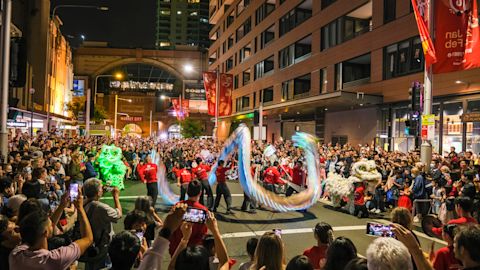New data has shown how a shift in how people are using the city.
The City of Sydney is Australia’s most significant economic centre, representing 7% of Australia’s GDP and 22% of the NSW economy. The impact of the Covid pandemic and the associated shift in working trends and technologies has been profound.
This snapshot explores the emerging trends as Sydney emerges from the pandemic and seeks to understand the longer-term impacts on the city and its economy.
See our full May 2023 city insights snapshot

A shift in how we use the city
Local spend across the City of Sydney’s area has bounced back strongly and now sits at 98% of pre-pandemic levels, while visits to the city have recovered more slowly, up to 81% of pre-Covid levels.
The gap between visits and spend suggests a shift towards more purpose-driven visits. People visit the city looking for experiences and not just as a location for work.

We’re coming in more mid-week
Tuesday, Wednesday and Thursday are the strongest days for public transport, reflecting the popularity of working from home on Monday and Friday.
Opal tap-off data shows that public transport use over the week has bounced back to 84% of pre-pandemic levels. This represents a strong recovery in the 12 months to April 2023, up from 51% of pre-Covid levels in March 2022.
Weekday spend in Central Sydney remains lower than 2019, but an increase in weekend spend has offset this. Saturday spend is particularly strong, up 18% on pre-Covid levels.
After dark, Saturday is the star
Our night-time economy has bounced back strongly to 97% of 2019 levels. Spend between 6pm and 6am represents 29% of local spend in a 24 hour period, which is a higher portion than in 2019.
Saturday night is the star of the show, up 15% on pre-pandemic levels, with Sunday nights close behind in terms of growth, with 14% more being spent compared to pre-Covid levels. Night-time spend on Fridays has recovered more slowly but now matches pre-pandemic performance.

International students return
International student arrivals to Australia have been rising steadily, now at 74% of 2019 levels. The growth of Sydney’s international student population continues to exceed the national average, increasing 6% from November 2021 to November 2022.
There are now 205,931 international students in NSW, with 95% of these in Greater Sydney. As was the case pre-pandemic, China contributes the most students to the NSW population, at 50,730. While significant, this represents just 46% of pre-pandemic Chinese student numbers.
The continued return of international students will be an important driver for Sydney’s post-pandemic recovery.
Deep dive into our city insights report for more.
Published 23 May 2023, updated 14 February 2024



